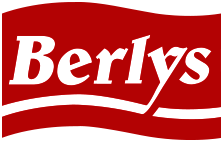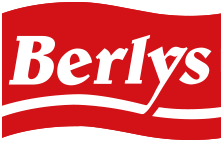
As well as carbohydrates, bread also contains a good quantity of proteins of plant origin, resistant starch and other types of fibre (particularly whole fibre), group B water-soluble vitamins, and minerals such as phosphorous, magnesium and potassium, as well as iron, calcium, iodine and zinc. And it barely contains fat!. It is important to remember that whole bread, made with flour produced from whole cereal grain, provides not just greater amounts of fibre but also more vitamins and minerals than white bread.
All in all, medical experts recommend average consumption of between 220 and 250 grams (in more than one meal), well above current consumption of about 150 grams.
Ingredients in the bread make

Flour
Read more +
Water
Read more +
Salt
Read more +
Yeast
Read more +Flour
Flour is the most important raw material in bakery, made fundamentally from wheat whose grain is rich in starch, fibre and antioxidants, protecting our cells against free radicals.
Water
Water hydrates the flour, moistening the starch grains and proteins which, after transforming into gluten, act as an agent for making the dough. It also creates a moisture which is essential to the process for the development of the enzymatic medium and bread making fermentation.
Salt
Salt affects the bread’s flavour, enhancing the water-absorption and giving colour to the crust. It also improves the stability of the dough, controlling the growth of microorganisms and the fermentation rate.
Yeast
Yeast triggers the fermentation of the dough prior to baking, providing volume and flavour to the bread.
Cereals and Seeds

Rye
Read more +
Oat
Read more +
Barley
Read more +
Flax seeds
Read more +
Sesam seeds
Read more +
Sunflowers seeds
Read more +
Pumpkin seeds
Read more +Rye
It is highly recommended for arteriosclerosis, hypertension, vascular diseases, as it promotes blood circulation.
Oat
It contains a lot of fiber and is ideal for lowering cholesterol
Barley
Easily digestible cereal with a mild laxative action. In addition, it contains folic acid, indicated in pregnant women to protect the baby from possible malformations.
Flax seeds
The richest plant product in omega-3 acids. It cares arteries, increases defenses, and favors the proper functioning of neurons.
Sesam seeds
They delay cellular aging and act against fungi and bacteria.
Sunflowers seeds
They help blood circulation and brain performance
Pumpkin seeds
They fight rheumatism, regulate cholesterol and hypertension and have anti-inflammatory effects.

Children who eat more bread are less obese
The ALADINO study of the prevalence of Child Obesity, by the Food Security and Nutrition Agency (AESAN) in Spain, revealed that 45.2% of boys girls aged between 6 and 9 are overweight, representing a major Public Health problem.Factors that favor obesity
Many factors are influencing this fact, like new consumption habits, sedentary lifestyle, unbalanced diets or stopping eating bread.
In fact, another recent study by Dr. Rosa M. Ortega, Professor of Nutrition at the Complutense University of Madrid, revealed that children who consume more bread have a lower percentage of overweight and obesity, as well as healthier cardiovascular results than children who do not eat bread.

Include bread in their breakfast. They will perform better
Nutritionists consider breakfast to be the most important meal of the day, providing the dietary basis for the start to the day and for mental and physical performance.A glass of milk: important at times of growth because of its high calcium content. Orange juice or fruit, the source of natural vitamins necessary to strengthen the body’s defences.
A slice of bread with butter and jam, providing energy and carbohydrates.
 Bread and Coeliac Disease
Bread and Coeliac Disease

Gluten intolerance
Gluten is a protein found in cereals like wheat, barely, rye or oats and so in all the foods made with them: flours, bread, pastas…Their consumption by those intolerant to them produces a serious lesion in the small intestine mucosa which prevents adequate absorption of food nutrients.The FACE estimates that 1 of every 100 persons is coeliac. Of this population, it is calculated that just 10% is diagnosed, and 50% of these are children up to 14 years of age. www.celiacos.org

Betina: the best gluten-free bakery brand
Betina is the brand of Gluten-free bakery products for people with Coeliac disease and those who are sensitive to gluten. Our production lines are totally isolated, inside an air-conditioned and over-pressurized chamber in order to prevent any contamination. Besides, we keep a permanent analytical system and a strict qualities control to ensure the absolute absence of gluten. All Betina products have been certificated by ELS and are individually packaged to prevent any contamination from other products that may contains gluten.
Just like traditional bread
Betina bread products are made using the finest ingredients, following a process that ensures the golden colour and soft crumb of traditional bread, but free from gluten. For greater convenience, they come in an individually ovenable bag.
The softest, most delicious bites
Betina gluten-free pastries are made with all our care and attention, using the finest ingredients. Only in this way can we achieve the irresistible flavour and softest texture found in traditional pastries. In addition, they do not require baking, simply defrost and they are ready to eat. Who could resist!
Health Commintment
Berlys: trans-fats-free
What are trans fats?
Trans fats, a health risk
Bocadillos saludables para todos



Salmón ahumado, patata y zanahoria
El salmón es uno de los ahumados más populares y más beneficiosos para la salud porque es muy rico en ácidos omega 3. Es una excelente fuente de proteínas que en este bocadillo se equilibran con los hidratos aportados por la patata y el pan. En este caso se recomienda un pan blanco para realzar el sabor de sus componentes.
Elaboración
- Poner en la base una fina capa de patata cocida con unas gotas de aceite de oliva virgen extra.
- Añadir zanahoria rallada y seguidamente el salmón ahumado que se aderezará con unas gotas de salsa griega o de yogur.
- Poner la sepia recién hecha a la plancha, con un unas gotas de aceite de oliva virgen crudo, y terminar con cebollino picado.
Pan
Frutas y hortalizas a la plancha
Algunas frutas también son ingredientes a tener en cuenta para consumir entre pan y pan. Un contraste de sabores y texturas ideal con una base de verduras a la plancha y queso fresco, para elaborar un bocadillo muy sano y original. Como soporte, proponemos el Rombo un pan de atractivo aspecto y acentuado sabor.
Elaboración
- Poner en la base rodajas finas de berenjena y calabacín preparados a la plancha.
- Añadir rodajas de manzana, pasadas también por la plancha, y poner seguidamente piña al natural, unos dados de queso blanco y tomates cherry
- Finalizar con un toque de cebollino picado.
Pan
Vegetal del mar
Un bocadillo equilibrado y fresco, en el que llama la atención el sabor de la rúcula, en contraste con las gambas y las huevas de salmón. Y al que se suman los beneficios para la salud de los germinados de alfalfa, ya que contienen una gama completa de vitaminas y sales minerales (A, B, C, D, E, K, U - Ca, K, MG, P, FE, ZN, SE), una elevada cantidad de proteínas (el 35%) y todos los aminoácidos esenciales.
Para este tipo de bocadillo se recomienda un pan de sabor acentuado y miga alveolada como es el Rombo.
Elaboración
- Poner en la base rúcula fresca y una fina capa de mahonesa ligera.
- Añadir una buena cantidad de germinados de alfalfa y sobre éstos, gambas cocidas
- Para finalizar se añaden huevas de salmón al gusto.















